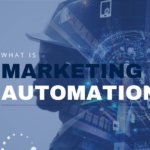Introduction
Did you know that the average click-through rate for display ads across all formats and placements is just 0.35%? That means for every 1,000 impressions, only 3-4 people are clicking on your ads. But with effective ad optimization, you can dramatically improve these numbers.
Ad campaign optimization isn’t just a nice-to-have – it’s essential for survival and growth.
Ad campaign optimization maximizes your advertising budget, increases relevance and engagement with your target audience, and improves overall campaign performance and ROI.
Ad campaign optimization aims to:
- Increase click-through rates (CTR)
- Lower cost per click (CPC) and cost per acquisition (CPA)
- Boost conversion rates
- Enhance overall return on ad spend (ROAS)
Understanding Ad Campaign Optimization
Ad campaign optimization is the process of continuously refining and improving your digital advertising efforts to achieve better results. It involves systematically analyzing campaign performance data, making data-driven adjustments, and testing new strategies to enhance ad effectiveness.
Ad optimization involves:
- Selecting and utilizing the most effective keywords for your campaigns
- Identifying and reaching the right audience segments
- Creating compelling messages that resonate with your target audience
- Continuously analyzing campaign performance data
- Developing innovative ad formats and content to stand out
The role of data analysis and creativity in ad optimization cannot be overstated. While data provides the insights needed to make informed decisions, creativity is what sets your ads apart in a crowded marketplace.
For example, when Dollar Shave Club, a men’s life-style brand delivering personal grooming products to men, launched its now-famous video ad which combined data-driven insights about its target audience with creative humor, resulting in over 26 million views and a significant boost in subscriptions.
Understand that ad optimization is an ongoing process. As market conditions, consumer preferences, and competitive landscapes change, your optimization strategies must evolve accordingly.
Speaking of strategies, let’s dive into the tangible benefits that ad campaign optimization can bring to your business.
Benefits of Ad Campaign Optimization

Ad optimization offers numerous benefits:
- Making Ads More Compelling and Relevant:
By tailoring your message to specific audience segments, you can increase engagement and conversions. Personalized ads often increase revenue and retention rates by 10-30%.
- Minimizing waste, maximizing results:
Optimization allocates your budget more effectively, reducing spend on underperforming ads. This often results in significant cost savings – sometimes up to 30% or more of your ad budget.
- Adapting Ads for Different Audience Segments:
Personalization often increases conversion rates – up to 202% in some cases, according to a study by Monetate. Creating targeted ads for different segments allows you to speak directly to each group’s needs and preferences.
- Increasing Return on Investment (ROI):
Optimized campaigns often improve ROAS, sometimes by as much as 50% or more. This means you’re getting more value for every dollar spent on advertising.
- Gathering important audience data:
Optimization efforts provide valuable insights into your audience’s preferences and behaviors. Use this data to inform not just your advertising strategies but also product development, customer service, and overall business strategy.
Now that we’ve covered the why let’s get into the how with some common ad optimization strategies you can start implementing.
Common Ad Optimization Strategies

- Split Testing (A/B Testing):
Compare different versions of your ads to determine which performs best. This could involve testing different headlines, images, call-to-actions, or even entire ad formats.
- Bid Optimization:
Adjust your bids to maximize ROI based on performance data. This might involve increasing bids on high-performing keywords or decreasing bids on underperforming ones.
- Keyword Research:
Identify and target the most effective keywords for your campaigns. This includes finding relevant long-tail keywords, understanding search intent, and using negative keywords to filter out irrelevant traffic.
- Ad Copy Optimization:
Refine your ad text to improve relevance and engagement. This could involve crafting more compelling headlines, highlighting unique selling propositions, or using powerful words that drive action.
Campaign Type Selection Based on User Journey:
Choose different campaign types to align with various stages of the user journey. For example:
- Use brand awareness campaigns for the awareness stage:
These introduce your brand to potential customers who may not know about you yet, casting a wide net to build familiarity.
- Implement consideration campaigns for the middle of the funnel:
These provide more detailed information about your products or services, helping users evaluate your offerings against competitors.
- Deploy conversion-focused campaigns for users ready to make a purchase:
These use strong calls-to-action and incentives to encourage users who are already interested to take the final step and convert.
- Utilize retargeting campaigns for users who have shown interest but haven’t converted:
These remind users of your brand and offerings, often with personalized messaging based on their previous interactions.
Steps to Optimize Your Ad Campaign
- Identify your goals:
- Driving traffic: Focus on metrics like click-through rate and total clicks
- Increasing conversions: Prioritize conversion rate and total conversions
- Improving ROI: Concentrate on return on ad spend (ROAS) and cost per acquisition (CPA)
- Analyze data:
- CTR: Understand how compelling your ads are to your target audience
- Conversion rate: Measure how effectively your ads are driving desired actions
- ROI: Determine the overall profitability of your ad campaigns
- Test different approaches:
- Ad copy variations: Experiment with different headlines, descriptions, and call-to-actions
- Keyword combinations: Try different keyword match types and long-tail variations
- Ad formats: Test text ads against image ads or video ads to see which performs best
- Refine your approach:
- Keep successful changes: Implement winning variations across your campaigns.
- Discard unsuccessful ones: Remove or revise underperforming elements
- Continuously iterate based on performance data: Make ongoing adjustments as you gather more data
With a good understanding of the steps involved, let’s move on to the key metrics you should be tracking.
Key Metrics to Track
- Click-Through Rate (CTR):
This is the percentage of people who click on your ad after seeing it. It indicates ad relevance and appeal. A high CTR suggests that your target audience is resonating with your ad.
- Cost per Click (CPC):
It represents the average cost you pay for each click on your ad. Monitoring CPC helps you manage budget efficiency and ensure you’re not overpaying for clicks.
- Conversion Rate:
This is the percentage of clicks that result in desired actions, such as purchases or sign-ups. It measures how effective your ad is in driving actual business results, not just attracting clicks.
- Return on Ad Spend (ROAS):
This metric shows the revenue generated per dollar spent on advertising. It indicates overall campaign profitability and helps you determine if your ad spend results in a positive return for your business.
Advanced Optimization Techniques
- Leveraging Conversational Banners:
These are interactive ads that engage users in a dialogue, increasing engagement and personalization. For example, a travel company might use a conversational banner that asks users about their preferred vacation type and then presents tailored destination options.
- Tapping into the Power of Segmentation:
Divide your audience into specific groups based on demographics, behavior, or preferences for more targeted messaging. A clothing retailer, for instance, might create separate ad campaigns for different age groups or style preferences.
- Embracing Dynamic Ads:
Use AI to automatically customize ad content based on user data and behavior in real-time. An e-commerce site could use dynamic ads to show users products they’ve previously viewed or items similar to their past purchases.
- Mastering Timing for ad placements:
Analyze data to determine the optimal times to serve your ads for maximum impact. A food delivery service might increase ad frequency during lunch and dinner hours when people are most likely to order.
Once you’re familiar with advanced techniques, it’s essential to know the tools that can aid you in optimizing your ads effectively.
Ad Optimization Tools
- AI-Powered Optimization Tools
Maino is an AI-powered ad optimization platform that offers comprehensive solutions for e-commerce and B2B businesses. Maino leverages machine learning to automate complex optimization tasks across multiple platforms like appsflyer, adjust, shopify, to visualize all your data in one place.
It provides audience targeting, creative content generation, and budget allocation among many other services. Its advanced ecommerce analytics dashboard provides real-time insights and actionable recommendations, helping businesses maximize their ROAS and streamline their ad management process.
- Ads Editing Tools:
Google Ad Editor is a free, downloadable application allows for efficient management of large Google Ads accounts. It’s particularly useful for making bulk changes and edits offline. Fillmora is tool that allows you to create visually stunning ads.
- A/B Testing Tools:
Platforms like Optimizely or VWO allow you to run controlled experiments on your ads and landing pages. These tools can help you make data-driven decisions about which ad variations perform best.
- Keyword Research Tools:
Services like SEMrush or Ahrefs help identify valuable keywords and analyze their potential. They provide data on search volume, competition, and even suggest related keywords you might not have considered.
- Analytics Tools:
Comprehensive platforms like Google Analytics or Maino’s proprietary analytics dashboard provide in-depth performance tracking and analysis. These tools offer insights into user behavior, conversion paths, and overall campaign performance.
Ad Optimization Best Practices
- Continually test and refine your approach:
The digital landscape is always evolving, so your strategies should too. Regular testing helps you stay ahead of changing trends and consumer preferences.
- Be patient:
Allow campaigns to generate sufficient data before making major changes. A good rule of thumb is to wait for at least 100 clicks or 2 weeks, whichever comes first. This ensures you’re making decisions based on statistically significant data
.
- Focus on relevance:
Ensure your ad copy, keywords, and targeting are tightly aligned with user intent and your offering. The more relevant your ads are to your audience, the better they’ll perform.
- Use Negative Keywords:
Prevent your ads from showing for irrelevant searches, saving budget and improving overall performance. For example, a luxury car dealer might use “cheap” or “budget” as negative keywords.
- Monitor campaigns regularly:
Set up alerts for significant changes in performance metrics and be ready to make adjustments as needed. This proactive approach helps you catch and address issues before they significantly affect your results.
Real-life example: When outdoor retailer REI optimized their Google Shopping campaigns using automated bidding and negative keywords, they saw a 5x increase in conversions and a 35% decrease in CPA. This demonstrates the power of combining multiple optimization strategies for dramatic results.
So, what are the takeaways from all these strategies and best practices?
Conclusion
Ad optimization is not a one-time task but a continuous journey of refinement and improvement. Implementing these strategies and best practices can significantly enhance your ad campaign performance, leading to better ROI and business growth.
The importance of continuous refinement cannot be overstated. The digital advertising landscape is constantly evolving, with new technologies, platforms, and consumer behaviors emerging regularly. Committing to ongoing optimization ensures that your campaigns remain effective and competitive in this dynamic environment.
Remember, the key to successful ad optimization lies in the balance between data-driven decisions and creative execution. With tools like Maino’s AI-powered platform, you can automate many of the complex optimization tasks, freeing up your time to focus on strategy and creativity.
Ready to take your ad campaigns to the next level? Discover how Maino’s cutting-edge AI technology can transform your digital advertising strategy, helping you achieve unprecedented success in your ad optimization efforts.












